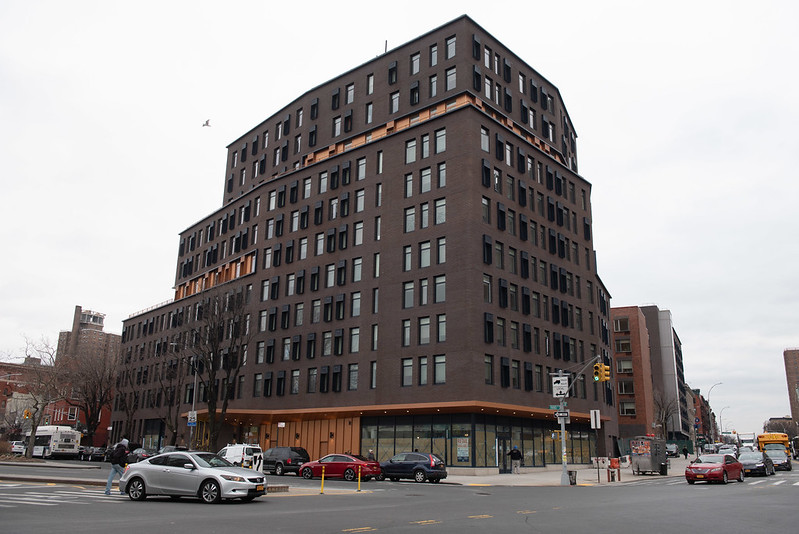
Keeping people in their homes is of the essence, the author writes (photo Michael Appleton/Mayor's Office
The federal response to the economic crisis just over a decade ago swiftly bailed out banks and other financial institutions, but left far too many struggling families in the lurch. It was too little, too late. This was devastatingly true for black families, whose home-ownership rates dropped from 50% to 42%, representing an enormous loss of generational wealth.
We must respond differently this time to ensure that homeowners hold onto their homes and apartment building owners and renters maintain safe and stable housing through the COVID-19 public health crisis that has also spurred an economic one. And because it is a health crisis, we should first prioritize vulnerable populations like those without a home and low-income renters at risk of homelessness.
While we are still processing the gravity of COVID-19’s destructive capacity and the consequences for our families, communities, and economy, as has occurred in past natural disasters, we know the effects on homeless people, low-income renters, and homeowners will be catastrophic unless we act quickly. Federal housing assistance is desperately needed both to slow the spread of the coronavirus and in response to what is looking like a significant economic downturn as businesses and entire industries may be closed for months while capital markets are in turmoil and job losses skyrocket.
Emergency housing assistance is a critical component of a comprehensive response of public policy measures to stop the spread. New York already has an alarming number of confirmed cases of the new coronavirus in homeless shelters. Statewide, there are more than 92,000 homeless people. In addition, 100,000 children were living doubled up last year in overcrowded homes. Without the ability for social distancing or isolation, homeless people are at great risk while living on the street, in congregate shelters, or doubled-up in close quarters.
If the virus spreads through the 841 beds in the Bellevue men’s intake facility, for example, those men could nearly fill the 1,000-bed naval hospital ship scheduled to sail to New York City to bolster hospital capacity next month.
Federal resources must be appropriated for a swift response or COVID-19 is certain to rip through congregate shelters, street homeless communities, and reverse other containment efforts. Congress must appropriate at least $15 billion in McKinney-Vento Emergency Solutions Grants to move homeless people off the streets and out of crowded shelters.
Rental assistance and rapid re-housing programs can be used, as they have in the aftermath of other national crises, to house vulnerable populations. This time, these housing programs can also save lives.
The White House and Senate Republicans have included zero emergency housing assistance in the stimulus package currently being negotiated. This is a strategy to fill hospital beds at a rapid pace and further overwhelm our health care system.
And while they are proposing direct assistance — up to $1,200 to individuals — it will be insufficient, particularly in high-cost markets. In New York City, where 50% of all households already pay more than 30% of their income towards rent, the median rent was $1,450 in 2017.
According to the New York State Department of Labor data, in January there were roughly 1.3 million people in the state working in hospitality jobs in the arts, hotels, or restaurants and bars, or in retail jobs like clothing, electronics, and sports. Most of these people are now out of a job. Their income has been reduced to zero.
We are grateful that these workers will have the protection of the state’s foreclosure and eviction moratoriums. However even with this, people aren’t going to be able to afford the back payments in six or 12 months. A moratorium alone is only kicking the can down the road. We need assistance now that is appropriately sized to cover household costs.
Fannie Mae and Freddie Mac offered loan forbearance for building owners who offer protections to their renters. This approach makes sense because it shows that we are all connected and in it together, even when we are trying to keep six feet apart. But much more needs to be done.
The New York City Housing Authority (NYCHA), steward of New York City’s most affordable housing, also estimates that it will need $300 million in additional operating funds to cover rent losses, and additional time and contractors to keep up with the higher standards of cleaning now required to protect its 400,000-plus residents. All properties assisted by the federal Department of Housing and Urban Development (HUD) and the Section 8 program will face the same challenge of declining income and insufficient funding. Congress must include these critical HUD programs in the stimulus to ensure that these programs are fully funded and families are not kicked off programs due to lack of funds.
We urge Congress to do the right thing this time and ensure there is emergency housing assistance in the economic stimulus and coronavirus recovery bill that protects renters and homeowners across the nation. This is how we can do better than our response in 2008, help families hang onto their homes and vulnerable renters stay in their apartments.
***
Rachel Fee is Executive Director of New York Housing Conference, a statewide affordable housing policy organization. On Twitter @RachelFeeNYHC & @theNYHC.
***
Have an op-ed idea or submission for Gotham Gazette? Email This email address is being protected from spambots. You need JavaScript enabled to view it.